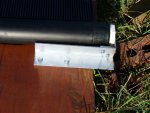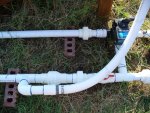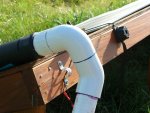Once something is glued in there is no getting it out. But that might not be required.
Three way valves like that one are normally designed to take one pipe size slipped inside the valve, or a different pipe size slipped around the outside of the valve. They come either 1.5"/2" or 2"/2.5". It is a little difficult to be sure, but it looks like the fitting that is glued in is small enough around that you can put the next size larger pipe around the outside of the current fitting and glue that to the valve. You would then need to use a reducer to couple that back to your smaller pipe. If it doesn't fit, you should be able to grind down the fitting that is glued in so it is small enough that you can get it to fit.
Three way valves like that one are normally designed to take one pipe size slipped inside the valve, or a different pipe size slipped around the outside of the valve. They come either 1.5"/2" or 2"/2.5". It is a little difficult to be sure, but it looks like the fitting that is glued in is small enough around that you can put the next size larger pipe around the outside of the current fitting and glue that to the valve. You would then need to use a reducer to couple that back to your smaller pipe. If it doesn't fit, you should be able to grind down the fitting that is glued in so it is small enough that you can get it to fit.


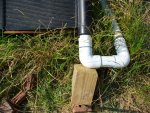
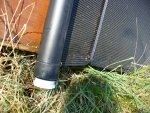
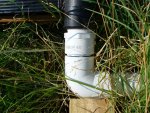
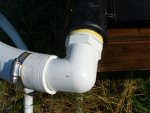
 I also had the problem of the bottom tubes getting squished, but mine was minor and they returned to their form once taken off the roof. This year I'm screwing 2x2's across the roof where the panels sit so the weight is evenly distributed. I'd encourage you to try this on your panels. I'm also using nylon straps instead of plastic.
I also had the problem of the bottom tubes getting squished, but mine was minor and they returned to their form once taken off the roof. This year I'm screwing 2x2's across the roof where the panels sit so the weight is evenly distributed. I'd encourage you to try this on your panels. I'm also using nylon straps instead of plastic.